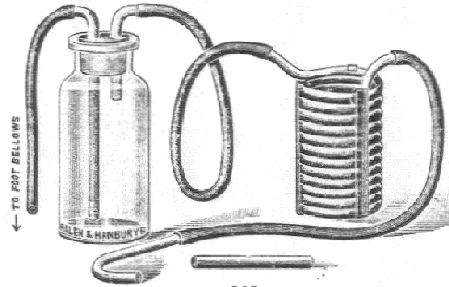 |
Veterinary Anesthesia & Analgesia Support Group |
| Practical Information for the Compassionate Veterinary Practitioner |
|
| HOME |
 |
|||
|
|||
1) AGENTS
a) Lidocaine
i) General
(1) Local anesthetic with quick onset and short duration of action (a) Onset = 5 to 10 minutes (b) Duration = 1 to 2 hours ii) Dose
(1) Dogs (a) 1.0 to 5 mg/kg (0.5 to 2.5 mg/lb) (2) Cats (a) 1.0 to 2.5 mg/kg (0.5 to 1.0 mg/lb) iii) Precautions
(1) Potential CNS toxicity (a) Usually manifests as seizure activity iv) Cost
(1) Low
b) Mepivacaine
i) General
(1) Local anesthetic with quick onset and moderate duration of action (a) Onset = 5 to 10 minutes (b) Duration = 2 to 3 hours ii) Dose
(1) Dog (a) 5 mg/kg (2.5 mg/lb) in dogs (2) Cat (a) 2.5 mg/kg (1.0 mg/lb) iii) Precautions
(1) IV use is not currently recommended iv) Cost
(1) Low
c) Bupivacaine
i) General
(1) Local anesthetic with slower onset and longer duration of action (a) Onset = 20 to 30 minutes (b) Duration = 3 to 5 hours ii) Dose
(1) Dog and cat (a) 1.0 to 2.0 mg/kg (0.5 to 1.0 mg/lb) iii) Precautions
(1) Never give bupivacaine IV (2) Potentially fatal cardiac toxicity (a) Calculate doses carefully and aspirate carefully to guard against intravascular administration (3) There is some debate about the use of intrapleural bupivacaine if a pericardiectomy has been performed due to the increased potential for cardiac toxicity iv) Cost
(1) Moderate
2) APPLICATIONS
a) Consider adding an opioid to the local anesthetic
i) Both 0.075 mg/kg (0.035 mg/lb) morphine and 0.003 mg/kg (0.0015 mg/lb) buprenorphine have been shown to effectively double the analgesic duration when combined with lidocaine and bupivacaine 1,2
b) Outpatient/awake patient use
i) Mix 0.9 cc Lidocaine, 0.1 cc sodium bicarbonate, and 2 cc of sterile water (1) Reduced sting (2) Volume is more important than concentration
c) Splash block
i) Drip on or in SubQ space at closure of skin wound ii) The effectiveness of splash blocks is in question
d) Ring blocks
i) Mix 1.0 mg/kg (0.5 mg/lb) bupivacaine with 1.0 mg/kg (0.5 mg/lb) lidocaine and: (1) Either 0.075 mg/kg (0.035 mg/lb) morphine or 0.003 mg/kg (0.0015 mg/lb) buprenorphine to effectively double the duration of analgesia 1,2 (2) Sterile water q.s., if needed, to total 1 cc volume for cats less than 2.5 kg (5 lb). (3) Sterile water q.s., if needed, to total 2 cc volume for cats 2.5 kg (5 lb) and over. ii) Inject subcutaneously at the three sites demonstrated below:
iii) You may drop the lidocaine if given prior to spay (gives bupivacaine time to take effect) iv) Bupivacaine has significant potential to cause cardiac toxicity (1) Calculate dose carefully (2) Aspirate carefully before injecting v) DO NOT USE EPINEPHRINE CONTAINING AGENTS vi) Click here for an MS Excel Ring Block dose calculator
e) Intratesticular blocks
i) This is a very effective, low-cost application of local anesthetic agents ii) Mix 1.0 mg/kg (0.5 mg/lb) bupivacaine with 1.0 mg/kg (0.5 mg/lb) lidocaine and: (1) Either 0.075 mg/kg (0.035 mg/lb) morphine or 0.003 mg/kg (0.0015 mg/lb) buprenorphine to effectively double the duration of analgesia1,2 iii) Use a 25g or 27g 5/8” needle for most cats and a 22g 1 to 1 ½“ needle for dogs iv) Place the needle through the testicle starting from the caudal pole aiming for the spermatic cord v) It is OK, even desirable, for the needle to exit the testicle proximally as it is the spermatic cord that will receive the direct clamp stimulation vi) ASPIRATE BEFORE INJECTING
(1) Inject, expecting firm backpressure, while withdrawing the needle (2) Expect to use about 1/3 to ½ of the drug volume per testicle leaving the organ firmly turgid vii) Repeat for other testicle viii) The left over drug can/should be used to place a dermal incisional block ix) The total time for this procedure should be 1 to 2 minutes x) Drugs costs: (1) 3 kg cat = $0.04 (2) 55 kg dog = $0.65 xi) Videos
f) Intra-articular Injections
i) Lidocaine (1) 2 mg/kg (1 mg/lb) (a) With epinephrine prior to arthrotomy to help control hemorrhage (b) Without epinephrine after joint closure ii) Bupivacaine (1) 1.0 mg/kg (0.5 mg/lb) after closure iii) Generally, 4 - 6 ml fills a stifle iv) Place in joint after closure or place lidocaine w/epinephrine in joint before arthrotomy, wait 5 minutes, then proceed with surgery
g) Mandibular Block
i) Palpate foramen digitally from oral cavity to guide needle ii) Use 0.5 to 1.5 ml total volume iii) Effective coverage includes: (1) Lower teeth (2) Skin and mucosa of lower lip
h) Maxillary Block
i) 1.5 cm caudal to medial canthus ii) Just ventral to zygomatic arch and ahead of the ramus iii) Use 1.0 to 1.5 ml total volume iv) Effective coverage includes: (1) Maxilla and upper teeth (2) Nose and upper lip
i) Intercostal blocks
i) Block 2 spaces ahead and behind intercostals incision ii) Place 0.25 to 1.0 ml per site along the caudal border of each rib near the level of the intervertebral foramen (1) Do not exceed the dose guidelines above |
|||
| Return to top of page | |||
| Page references | |||
| 1 Buprenorphine added to the local anesthetic for axillary brachial plexus block prolongs postoperative analgesia. Candido KD, Winnie AP, Ghaleb AH, Fattouh MW, Franco CD: Reg Anesth Pain Med. 2002 Mar-Apr;27(2):162-7 | |||
| 2 The addition of opioids to local anaesthetics in brachial plexus block: the comparative effects of morphine, buprenorphine and sufentanil. Bazin JE, Massoni C, Bruelle P, Fenies V, Groslier D, Schoeffler P: Anaesthesia. 1997 Sep;52(9):858-62 | |||
Questions or problems regarding this web site should be directed to DRSTEIN@VASG.ORG . |
|||